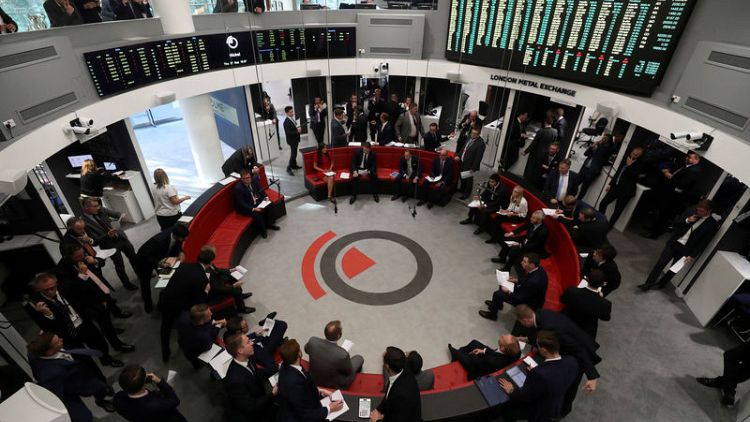By Eric Onstad
LONDON (Reuters) - The London Metal Exchange's three-month trial of switching to electronic closing prices for one of its benchmark base metal contracts has failed to lift volumes, industry sources said, lending further support to traditional open outcry trading.
The trial, which moved nickel from the ring to digital trading, which the LME thought may spur more participation in the setting of closing prices, will end on Tuesday.
The ring at the 142-year-old LME is the last open-outcry trading venue in Europe. Some members believed a successful nickel test would lessen the ring's importance.
But volumes during the electronic trial have so far been largely similar to those achieved with open outcry trading, industry sources who had seen the data said.
"What is happening on the trial in terms of volumes is not vastly different to when it was done in the ring, and if there isn't much difference, is there any point in changing it?," said one of the sources, who declined to be named.
The LME, the world's oldest and largest market for industrial metals, had said it planned to move to electronic closing prices for other metals such as copper and aluminium if the trial was successful.
Starting on Feb. 18, the closing price for the three-month benchmark nickel contract was established using a volume-weighted average price of electronic trades during two minutes from 1600 GMT.
LIQUIDITY KEY
The LME, owned by Hong Kong Exchanges and Clearing Ltd., will move pricing back to the open outcry ring from Wednesday and consult with members before making a final decision.
Another industry source, which uses the LME for physical rather than investment purposes, said volumes and liquidity were key to establishing valid prices and trading at reasonable costs.
"We don't have any problem with moving to an (fully) electronic platform, if there's a good reason for it," the source said.
"That would be only if it is easily tradable and accepted by all parties. The more liquidity there is, the more representative the price is."
Most physical contracts use official prices which are set during official open outcry rings at midday while closing prices are mainly used for end-of-day valuations and margins.
Other LME users believed the LME launched the electronic trial in an attempt to burnish its credibility with regulators.
One source believed the LME hoped to curb so-called "banging" the close, in which some players would place large orders in the ring just before the close to push up or down the price in line with their position.
"But I think that is less of an aspect these days. The huge commodity traders who used to bang or ramp the close, they're not really there anymore."
Another source said: "The LME is saying very publicly that it's getting its house in order, and the electronic close is a part of that."
LONGER ZINC RING
During the three-month period, the LME conducted another trial to extend closing ring-trading times for zinc by doubling the usual five minutes to 10 minutes.
Volumes increased by up to about 40%, but it was unclear whether this was due to the longer ring trading time or whether events in the zinc market were behind it, one source said.
"The increase in zinc volumes is significant although zinc has been more exciting over the test period," the source said.
"The guys on the floor say this is working really well and with the additional volumes coming, I could see that the LME might rearrange the times to add more metals being done on that 10-minute basis."
(Reporting by Eric Onstad; Editing by Veronica Brown and David Evans)



